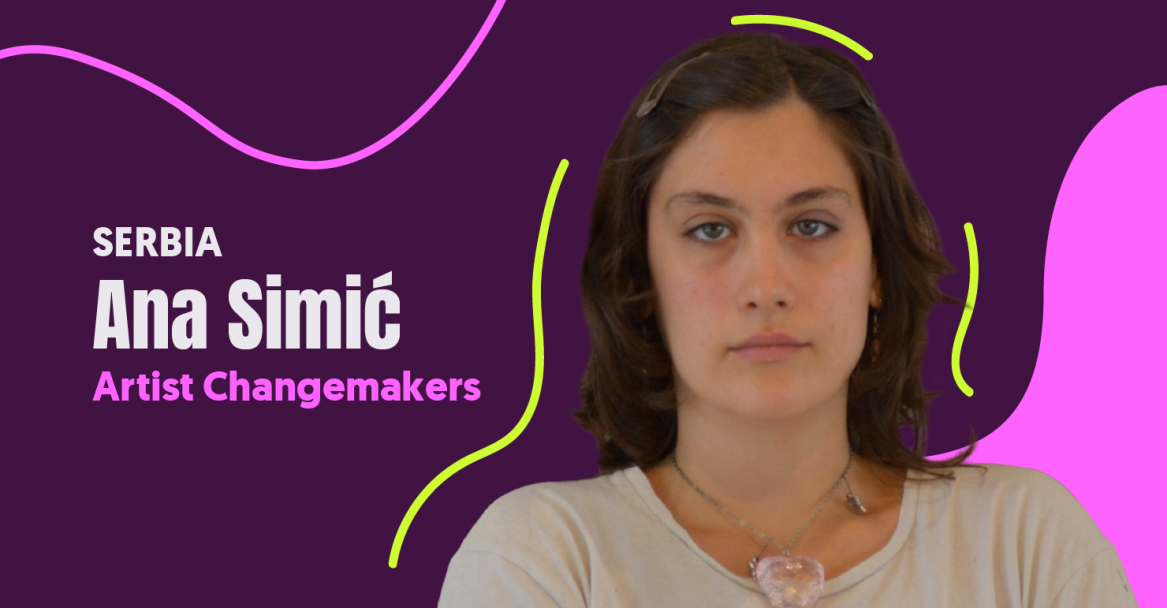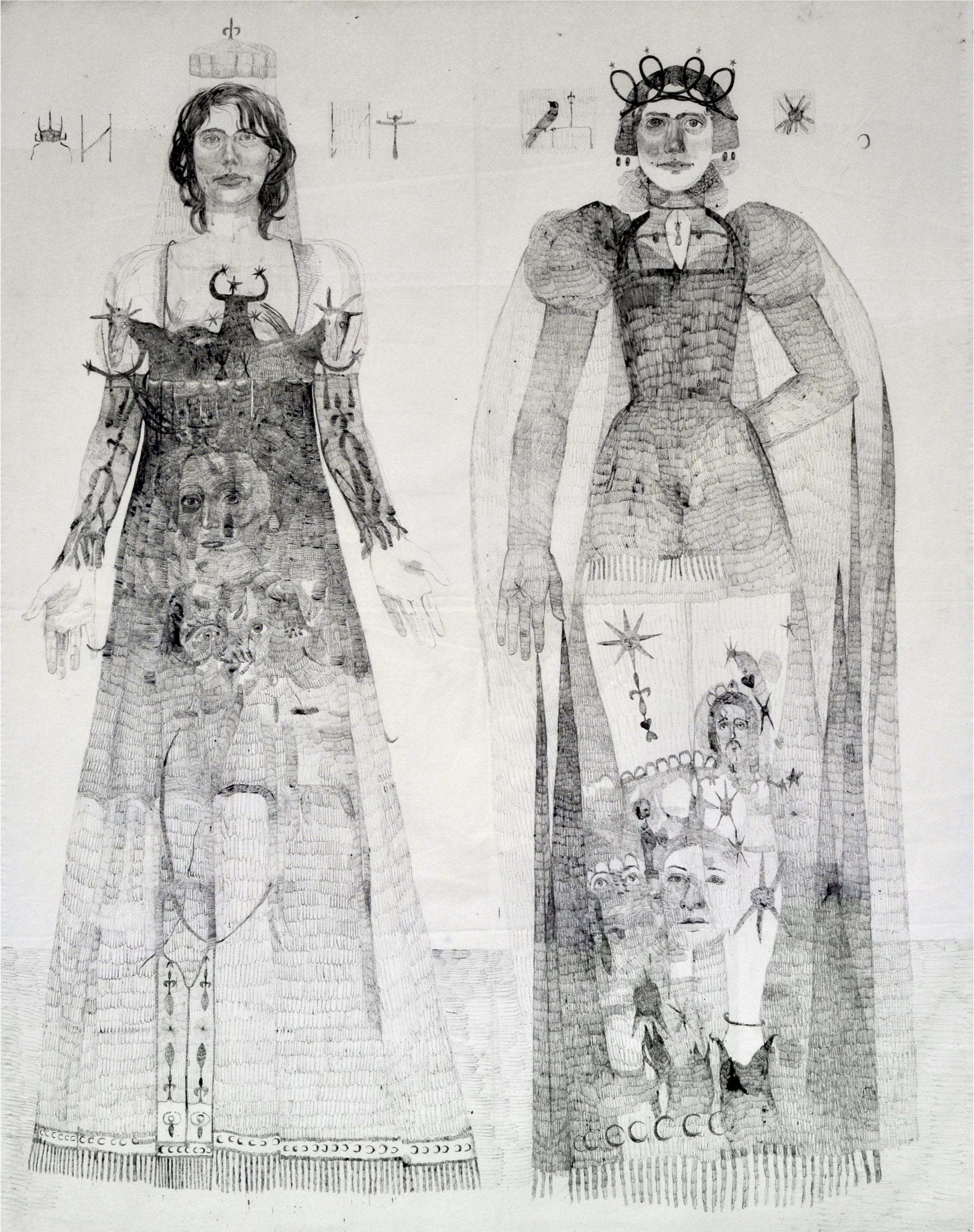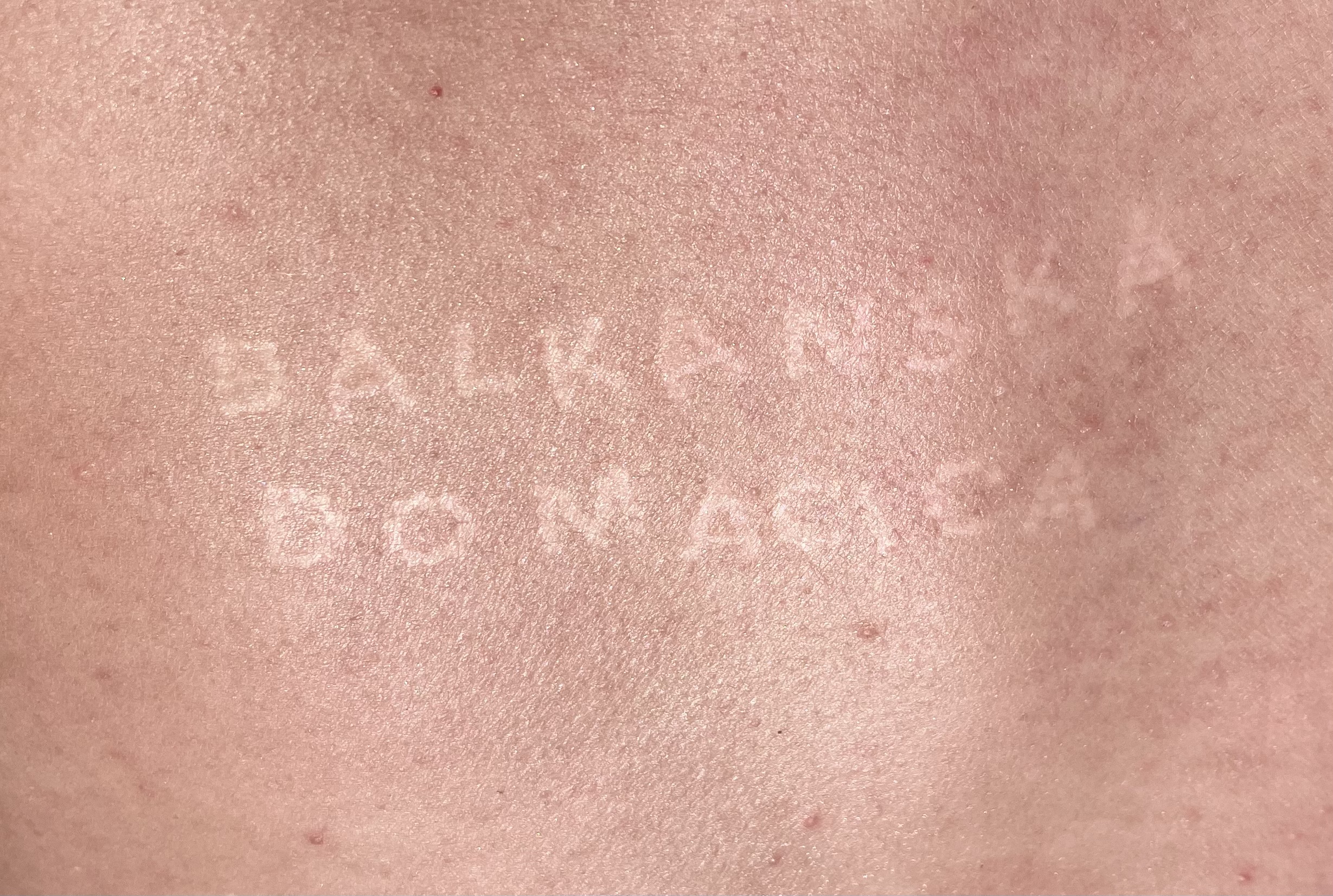Ana Simić
SERBIA

Ana Simić (she/her) is an artist from Serbia. Her work examines women's social positions in patriarchy through drawing, performance, installation, and video, using ink on cotton canvas. She has exhibited at Štab Gallery, Dom omladine, the Contemporary Art Gallery in Pančevo, and Gallery ‘73. Simić has shown in group exhibitions across Serbia and received the Vladimir Veličković Foundation recognition and the 2023 “Stevan Knežević” Award for Drawing. She is currently pursuing masters at the Faculty of Fine Arts in Belgrade. More of Ana’s work can be explored on instagram: @anqsimic
My work engages with patriarchal control over women’s bodies, technology, and everyday life, aiming to shift public consciousness through direct, confrontational visual strategies.Ana Simić
What role do you think art can play in social change?
Art exposes hidden injustices, challenges dominant narratives, and creates space for critical dialogue. It can provoke emotional responses, making structural violence visible and undeniable. My work engages with patriarchal control over women’s bodies, technology, and everyday life, aiming to shift public consciousness through direct, confrontational visual strategies.
How is your artistic practice is connected to amplifying social movements?
During the ongoing student protests in Serbia, I observed that the majority of those subjected to violence by the ruling party were women. Women also faced sexual violence within the student blockades. In response, I created a public intervention—a text that addressed both the physical and sexual violence committed against women. My aim was to shed light on these issues and bring them to public attention. The text read:
THIS IS A BLOCKADE OF THE STUDENT CULTURAL CENTER
STUDENTS CALL FOR INSTITUTIONAL ACCOUNTABILITY
SURVIVORS OF RAPE AND SEXUAL VIOLENCE DEMAND ACCOUNTABILITY FROM PERPETRATORS
SURVIVORS OF RAPE AND SEXUAL VIOLENCE DEMAND ACCOUNTABILITY FROM INSTITUTIONS
SURVIVORS OF RAPE AND SEXUAL VIOLENCE DEMAND ACCOUNTABILITY FROM SOCIETY
While trying to display this piece in public, I was repeatedly stopped by student perpetrators and their close associates. They told me I had no right to speak on behalf of the victims. But had the survivors themselves attempted to do this, they would have been silenced by the very men who committed violence against them.
For me, the most important thing in my work is to show empathy and strength for those who cannot speak out, to stand in front of them, demand justice on their behalf, and always speak up for what is right in my community.
What do you hope to achieve through this award?
This award would provide resources to expand my projects, increasing their reach and impact. I aim to deepen engagement with feminist discourse, collaborate internationally, and use digital media to further challenge patriarchal structures.
Featured work


